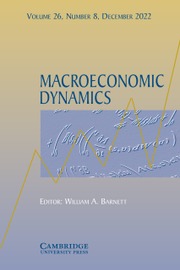Article contents
VALUING THE FUTURES-MARKET PERFORMANCE GUARANTEE
Published online by Cambridge University Press: 02 March 2005
Abstract
Futures-market exchanges guarantee the performance of all contractsto encourage active trading between anonymous partners. Traders buyfrom or sell to the clearinghouse. The exchanges rely primarily on amargin system — traders post a performance bond that they forfeit ifthey default — to manage their risk exposure. The marketvalue of the performance guarantee is the amount a trader would have to pay toinsure his performance if there were no exchange guarantee.Anunderpriced guarantee subsidizes high-risk traders and ultimatelyundermines the credibility of the exchange's commitment to perform.An adequate margin policy fairly prices the exchange performanceguarantee within an (economically insignificant) varepsilonneighborhood. I show that the value of a call (put) option with astrike price equal to the futures price minus (plus) the margin is anupper bound to the market value of the exchange's performanceguarantee. The probability that the futures price change exceeds themargin is the probability that the option expires “in the money.” Iestimate the value of the option on the December S&P 500 futurescontract during the market crash in October 1987 to illustrate thetechnique. For the first half of the month the value of theperformance guarantee was fairly priced. On the day of the crash itwas underpriced by as much as 10% of the value of the futurescontract. Futures-market margin committees moved quickly; by the endof the month the value of the performance guarantee was fairly priced.
Information
- Type
- Research Article
- Information
- Copyright
- © 1997 Cambridge University Press
- 1
- Cited by

